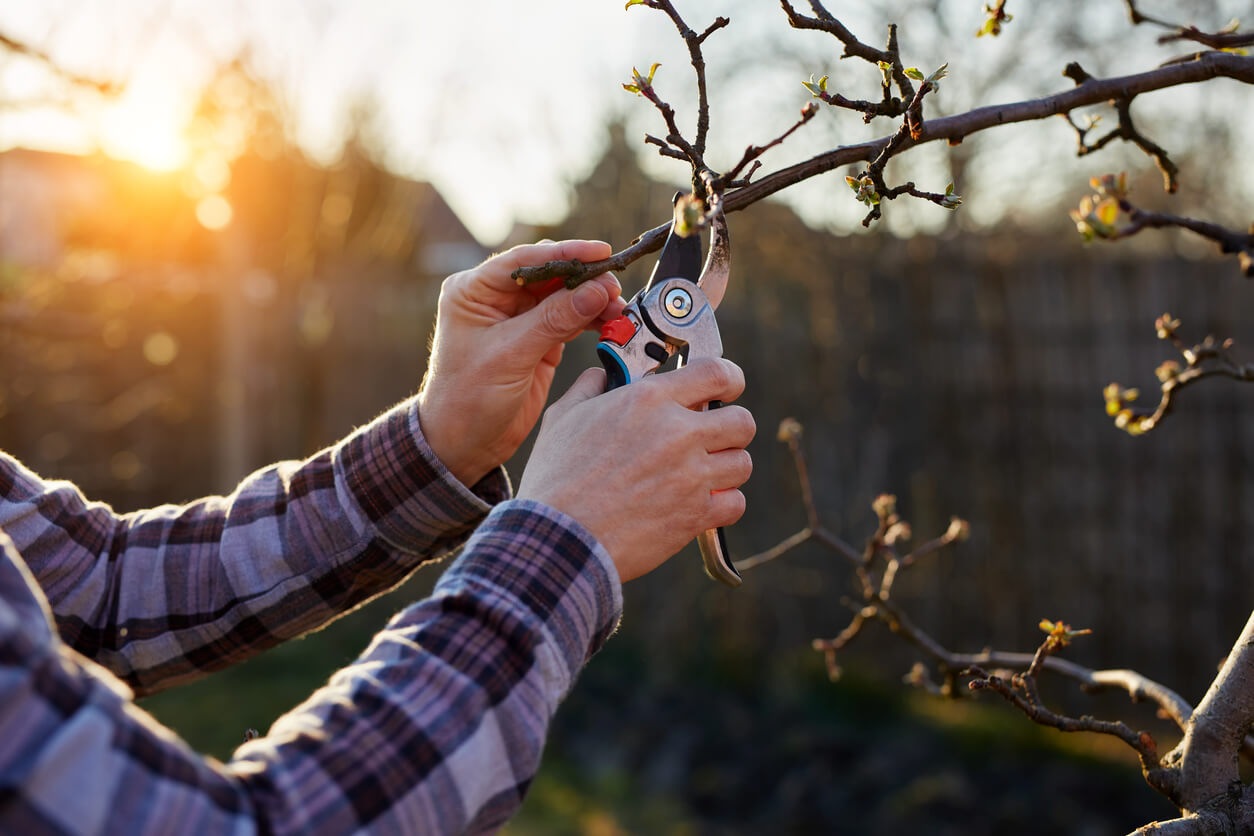
If you have apple trees, you know they need a bit of care to stay at their best. Pruning is one of those important tasks that might seem a bit daunting, but it’s essential for keeping your trees healthy and productive. By trimming the right branches at the right time, you help your trees produce more and better apples.
In this guide, we’ll help you understand everything you need to know about pruning apple trees. We’ll cover when to prune, discuss the step-by-step process, and what mistakes you should avoid when pruning. With these tips, you can keep your apple trees in great shape and enjoy a healthy and bountiful harvest.
Signs You Should Prune Your Apple Tree
Pruning your apple tree is key to keeping it healthy and productive, but how do you know when it’s time to start clipping? Here are some clear signs that indicate your tree could benefit from a good prune.
- Crowded Branches. If your apple tree has too many branches packed together, it’s time to prune. Crowded branches block sunlight and air circulation, making it hard for the tree to grow healthy and produce good fruit.
- Dead or Diseased Branches. Notice any lifeless or sick-looking branches? Removing these dead branches and diseased branches helps keep your tree strong and prevents the spread of illness that could harm your tree’s health.
- Crossing or Rubbing Branches. Branches that rub against each other can create wounds, which make your tree vulnerable to pests and diseases. Clear away these branches to protect the structure and growth of your tree.
- Excess Water Sprouts and Suckers. Keep an eye out for water sprouts shooting straight up and suckers growing from the base. These can sap energy from the tree’s main structure, so it’s best to trim them back.
- Irregular Shape or Height. If your tree looks lopsided or too tall, pruning can help. By shaping it properly, you can improve the tree’s balance and make harvesting easier.
Pruning Apple Trees: Why Is It Important?
Boosts Tree Health
Pruning is crucial because it helps keep your apple trees strong and healthy. By cutting away dead branches and diseased branches, you’re clearing out spots where pests and diseases love to hide. Plus, with fewer branches, the tree can focus more energy on the healthier parts, which makes them even stronger.
Enhances Fruit Yield
Pruning plays a big part in increasing your apple tree’s fruit production. By trimming the right areas, you’re letting more sunlight and air get to the fruit buds. This leads to a higher yield and bigger, better-tasting apples. Since you’re focusing the tree’s energy where it counts, the apples you get will be healthier and more plentiful.
Supports Easy Harvesting
By maintaining the right structure, pruning makes it easier to pick apples when it’s time to harvest. With a shape that brings lateral branches lower and keeps the tree at a manageable height, gathering your apples becomes a safer and more pleasant task.
Encourages New Growth
Regular pruning removes old or unproductive growth and gives way to new, vibrant shoots from leaf buds and fruit spurs. These batches of new growth will keep your tree feeling fresh and lively and ready to produce in the upcoming seasons.
How to Trim Apple Trees: Step-by-Step Process
Step 1: Gather Your Tools
Before you start, you’ll need a few essential tools. Grab some pruning shears for smaller cuts, loppers for medium branches, and a pruning saw for those larger branches. Make sure your tools are clean and sharp to make clean cuts that won’t harm your tree.
Step 2: Identify the Central Leader
Look for the central leader, which is the main vertical branch of your apple tree. It’s important to maintain this as the tallest part of the tree to support a strong structure and promote a balanced pyramidal shape.
Step 3: Remove Dead and Diseased Wood
Start with the basics—trim away any dead wood and diseased branches you see. By doing this first, you improve the tree’s health and open up the way for better sunlight and air coverage.
Pro Tip: Make cuts at a 45-degree degree angle just above a bud to help water run off and prevent decay at the cut site.
Step 4: Thin Out Overcrowded Areas
Now, focus on thinning out crowded sections. Look at areas where branches are too close or crossing each other. Trimming these lets light and air reach more of the lateral branches, which can promote healthy growth and fruit spurs.
Step 5: Trim Suckers and Water Sprouts
See any extra growth at the base or on branches, like water sprouts and suckers? These should removed, as they draw energy away from your healthy tree and can ruin its shape.
Step 6: Shape the Canopy With Care
Decide if you want your tree to have a certain shape like a goblet shape or espalier shape, and prune accordingly. Trim select branches to balance the tree’s height and width, while keeping those scaffolding branches to support future fruit weight.
Step 7: Clean Up Your Work Area
Finally, tidy up by picking up all the cut branches and twigs. Proper disposal helps keep diseases and pests at bay and keeps your garden neat and ready for new, healthy growth.
Pro Tip: Consider chipping the branches you’ve trimmed into mulch. It’s an eco-friendly way to reuse tree waste and nourish your garden soil.
What Not to Do When Pruning Apple Trees
- Avoid Heavy Pruning. Don’t remove too much at once, like chopping off more than 30% of your apple tree. Heavy pruning can stress the tree, make it grow unevenly, and reduce the amount and quality of fruit it produces.
- Don’t Prune in Wet Weather. Pruning during wet conditions invites diseases into the fresh cuts on your tree. It’s best to wait for dry weather to help keep your tree healthy and less prone to infections.
- Never Top Your Tree. Topping, or cutting off the top of the tree, destroys its natural shape and weakens the structure. Focus instead on removing horizontal branches selectively for a balanced shape.
- Avoid Cutting into the Central Leader. The central leader is crucial for your tree’s structure, so avoid cutting into it. Keeping this branch intact helps maintain your tree’s strength and overall shape.
- Don’t Use Dull Tools. Using dull tools can crush branches instead of making clean cuts. Always keep your tools sharp to minimize damage and help the tree heal faster.
When to Prune Apple Trees: The Best and Worst Months
The best time for pruning apple trees is during late winter to early spring, specifically from February to April when the tree is dormant. This timing allows cuts to heal before the active growing season begins. Avoid pruning in the summer months (June through August) since the heat can stress the tree and promote excessive new growth, which can lead to weak branches that may not endure cold winters.
Late autumn, particularly October and November, is also a risky time for pruning, as fresh cuts might be vulnerable to chilly temperatures and potential diseases. By timing your pruning just right, you can set your apple tree up for a healthy and productive season.
Give Your Trees the Treatment They Deserve—Contact Bunyon Bros. Tree Service Now!
Pruning is an ongoing part of tree care. It’s about more than just cleaning up—it’s about helping your trees flourish and produce their best. The time you spend pruning will pay off when it’s time to pick those juicy apples. With the right cuts and a little patience, your apple tree will thank you with healthy growth and plentiful harvests.
If you’re unsure about pruning techniques or lack the time, Bunyon Bros. Tree Service has your back. We offer expert tree trimming services to keep your trees in top shape. With a commitment to quality care, we’ll ensure your trees get the attention they need for a healthy and fruitful future. Reach out to our professional team for a free estimate!
